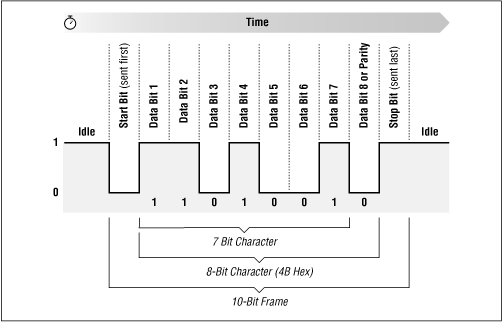 | Chapter 14 Telephone Security |  |
Information inside most computers moves in packets of 8, 16, or 32 bits at a time, using 8, 16, or 32 individual wires. When information leaves a computer, however, it is often divided into a series of single bits that are transmitted sequentially. Often, these bits are grouped into 8-bit bytes for purposes of error checking or special encoding. Serial interfaces transmit information as a series of pulses over a single wire. A special pulse called the start bit signifies the start of each character. The data is then sent down the wire, one bit at a time, after which another special pulse called the stop bit is sent (see Figure 7.1).

Because a serial interface can be set up with only three wires (transmit data, receive data, and ground), it's often used with terminals. With additional wires, serial interfaces can be used to control modems, allowing computers to make and receive telephone calls.